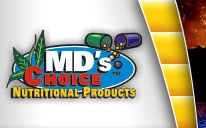Trace Elements
![]()
| Vanadium |
Physiological Role of V
Absorption and Excretion
Requirements
Sources
Deficiency Signs
Toxicity
- All criteria for essentiality have been met
- At both pharmacological and physiological levels, V decreases blood lipid levels
- V may have a catalytic or enzymatic function in bone metabolism or formation
- V may have a role in labile methyl metabolism in chicks
- In vitro studies have indicted that V may have a specific physiological role as a regulator of Na, K-ATPase
- Haleperoxidase which facilitates formation of carbon-halogen bonds require V in lower forms of life (reviewed in J. Nutr. 126:2452S, 1996). V deprivation affects thyroid peroxidase in rats (Magnes. Trace Elem. 9:219, 1990)
- Absorption of V is low, with most excreted in feces
- Excretion of absorbed V is largely through the kidneys
- 10 to 25 ug of V/Kg diet was insufficient for rats and chicks under certain conditions
- V deficiency has not been identified in humans even though diets generally supply < 30 ug/day (J. Nutr. 126:2452S, 1996)
- An estimated daily dietary intake (EDDI) of 10-20 ug has been suggested for humans (J. Nutr. 126:2452S, 1996)
- Tricalcium phosphate contains .025-.25% V
- Some feed samples contain 100 ug/kg: Pasture herbage (dry), 80; oats, 60; oat straw, 120; milk (wet) < .1; liver, fish, muscle, not over 10
- Shellfish, mushrooms, parsley, dill seed, and black pepper are rich in V (J. Nutr. 126:2425S, 1996)
- V-deprived rats
- Elevated hematocrit and increased Fe in blood and bone
- Reduced number and survival rate of pups in rats fed < 10 ug V/kg diet over 4 generations
- V-deprived chicks
- Reduced growth
- Depressed wing and tail feather development
- Increased hematocrit
- Increased epiphyseal plate and decreased primary spongiosa in bone. Abnormal iodine metabolism (Magnes. Trace Elem. 9:219, 1990)
- Industrial exposure through inhaled airborne particles causes irritation of nose and throat, a anorexia, nausea, and diarrhea
- Toxicity to ruminants observed at 10 mg/Kg body weight (about 300 ppm in diet) or above
- Clinical signs: diarrhea, dehydration, emaciation, listlessness, and prostration listed in order of occurrence
- Gross pathological signs: Congestion of liver and lungs, diffuse petechiae covering kidney and heart, ulcers in the rumen, hemorrhagic inflammation of the intestinal tract
- V above 10 ppm toxic to chickens
- Depressed body weight of laying hens
- Decreased production (at 30 ppm) and hatchability (at 60 ppm) of eggs
- Maximum tolerable levels
- 50 ppm for cattle and sheep
- 10 ppm for poultry
![]()
Trace Elements

For individual consultation or questions about our products, call
1-800-628-0997
Click Here for a Printable Version of This Page
